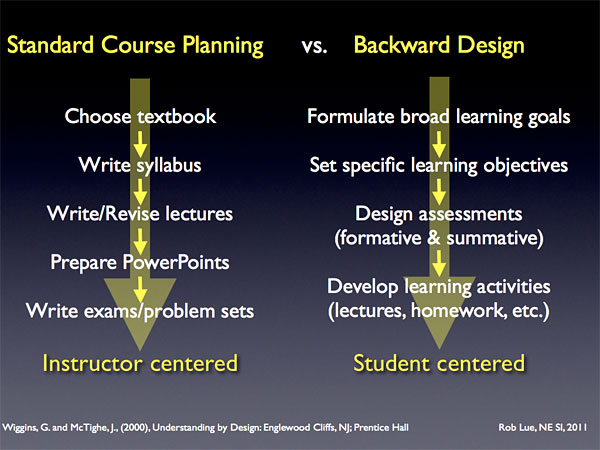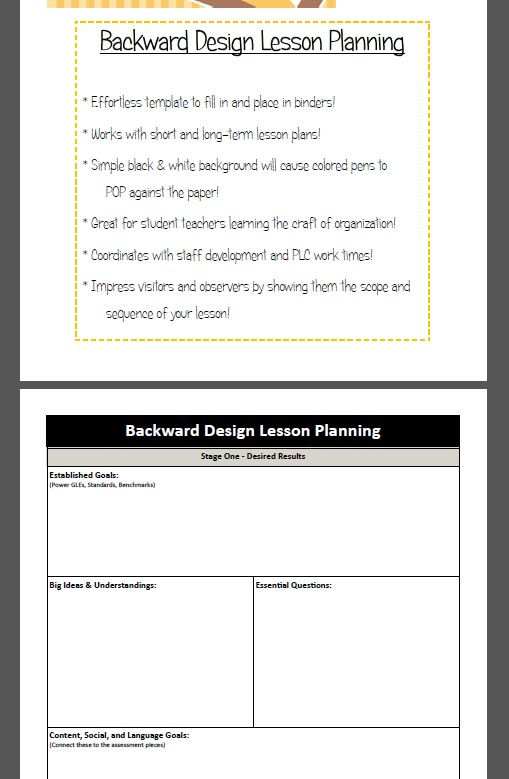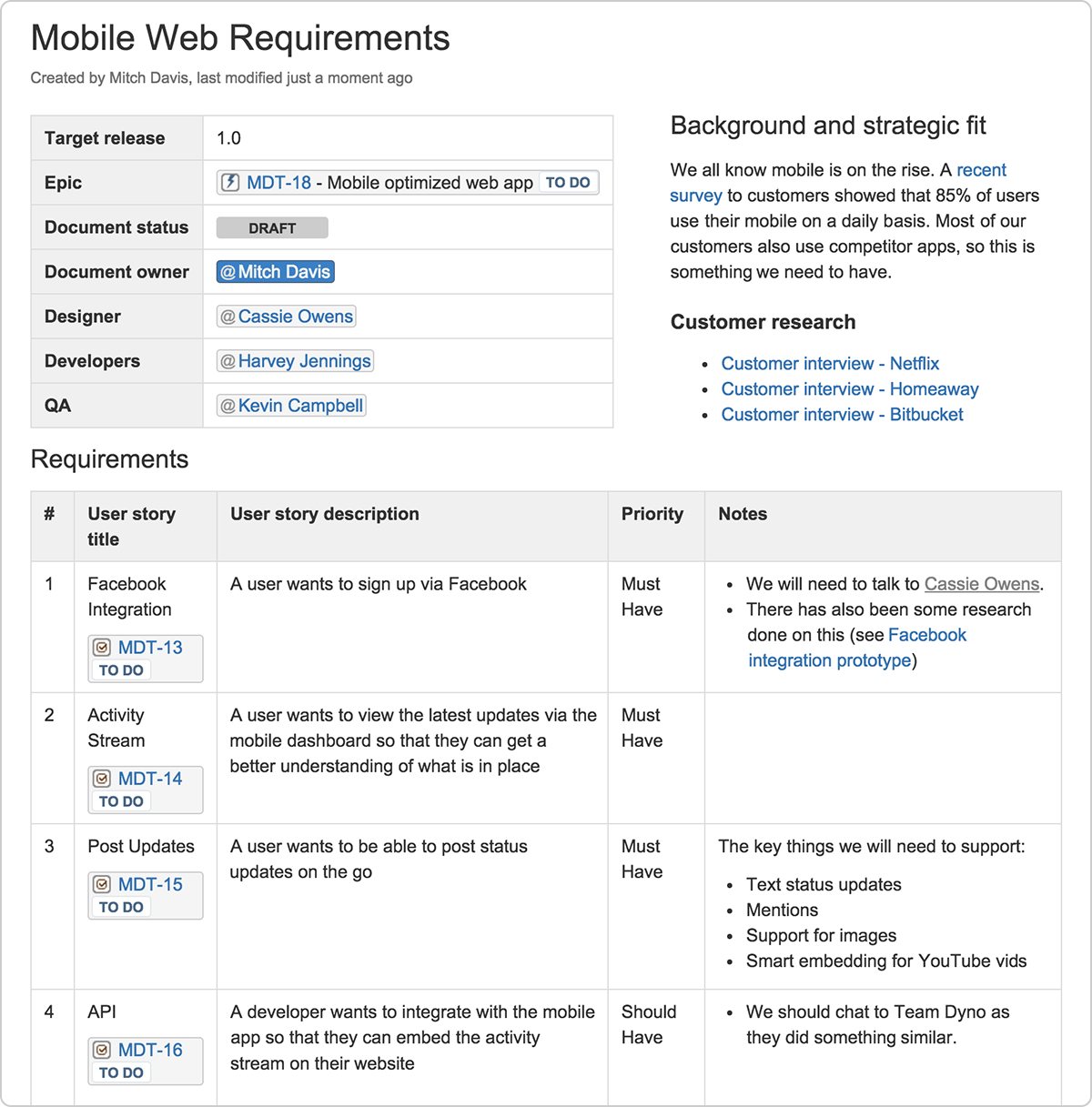Table Of Content

If you’ve never heard of backwards design or see it being used then it is because most of the time people are using a traditional approach. The traditional design approach is the exact opposite- the process starts at the front and works its way to the end. When we first begin the process of building our online course, we are overwhelmed by all the different ways to begin the process.

The Three Steps of Backward Design Are:
This is the material you present alongside your main course content to support students with the necessary disciplinary knowledge or foundational skills that underpin or relate to it. Furthermore, when a teacher designs a lesson without a plan for the final assessment, they may be tempted to add activities or units to the lesson just for the sake of filling class time. Students of all ages know when they are asked to do something pointless in class; they can spot “busy work” from a mile away, and will disengage as they see fit. Instructional strategies are the teaching methods by which you present new information to your students. Methods can include teacher-centered approaches like demonstrations or lectures, or student-centered approaches like peer discussion and inquiry-based learning. I hope this post helped answer your questions about the backward design approach and inspires you to give it a go in your classroom.
Center for Teaching
The table below lists these three stages, alongside the tasks and considerations that are central to each stage. When you set goals upfront, you may base them on assumptions about student potential. These assumptions may not accommodate the needs or potential of individual students. You've got lots of ideas for online courses but no clue how to move forward.
Backward Design Step 2. Design the Assessment(s)
Another foundational theory supporting Backward Design is Bloom's Taxonomy, developed by educational psychologist Benjamin Bloom and his colleagues in 1956. This framework categorizes learning objectives into a hierarchy of complexity, ranging from basic knowledge recall to higher-order skills like analysis and creation. You might wonder what the true difference is between traditional and backward design lesson plans. To thoroughly describe what meeting your goals looks like in practice, you will likely develop at least three to four learning outcomes for each goal. If you have a goal that has zero corresponding outcomes, it should not be a learning goal for your course. If you have a goal that has far too many corresponding outcomes, there may be another goal floating among them that you haven't articulated yet.
Instructional activities are the ways in which students will actually interact with the content. Activities can be passive such as listening to a lecture or watching a video, or active such as using manipulatives in math or holding small group discussions. The incorporation of backward design also lends itself to transparent and explicit instruction.
Once you have worked through the three steps of backward design, you should make sure that all elements (objectives, assessments, learning activities, and instructional materials) align with each other. In the well-known book The Seven Habits of Highly Effective People, author Dr. Stephen Covey describes seven habits that successful people tend to live by. The second habit is “Begin with the end in mind.” Dr. Covey was suggesting that the most successful people are those who create a vision of the future in their mind. They determine what they want to be and do, and then take actions to reach that result. This general life lesson can be applied in a classroom setting as teachers plan their lessons based on what they need their students to know.
Project-Based Learning (PBL)
The next step is to determine appropriate assessments to demonstrate success with the objectives in place. The final step is where the educator decides which activities and teaching methods are best suited to achieving the learning goal. Once the assessments are aligned to the intended learning outcomes, the job of in-class instruction becomes much clearer. Instead of asking before each class session, “what am I going to cover today,” in-class time can be devoted to helping students actually achieve the desired learning outcomes – and ultimately succeed on the various assessments. With intended learning outcomes in hand, the next step of the backward design process is to create assessments that appropriately measure students’ attainment of intended learning outcomes.
Designing Assessments of Student Learning
Your mission for Part 2 is to look over your notes about the targeted content and skills and craft an assessment that encompasses each goal. You don’t HAVE to have these supplies, but it makes the job go smoother. Exploring the philosophy, process and benefits of backward lesson design. If you have any additional questions or want to share your experiences with this approach, leave a comment below!
Center for the Advancement of Teaching Excellence
By starting with the end goal in mind, teachers can adjust their instruction and activities to meet the needs of their students better. This can lead to more engaging and effective learning experiences tailored to each student's individual needs and interests. In Understanding by Design, Wiggins and McTighe argue that backward design is focused primarily on student learning and understanding. When teachers are designing lessons, units, or courses, they often focus on the activities and instruction rather than the outputs of the instruction. Therefore, it can be stated that teachers often focus more on teaching rather than learning.
Husker instructors step up to continue coursework - Nebraska Today
Husker instructors step up to continue coursework.
Posted: Sun, 29 Mar 2020 07:00:00 GMT [source]
Like any journey, knowing where you've come from can help you understand where you're going. And in the world of Backward Design, it's always about reaching meaningful destinations. After its introduction, other scholars and educators picked up the concept and ran with it. Some people expanded on it, and others tried to apply it in various settings—schools, colleges, and even corporate training programs. In theory, this will mean that every test your students take is relevant and helpful and shows them exactly what they do and do not need to do in order to pass your course. To connect directly with our partners for teaching support or for help with Ohio State eLearning tools, visit our help forms.

As you create assessments and instructional strategies, keep student understanding at the forefront. Educators like Grant Wiggins emphasize that the ultimate goal of Backward Design is not just to teach content but to facilitate true understanding and application of knowledge. The traditional approach to education planning, sometimes called "Forward Design," usually starts with content and activities. Teachers first decide what to teach (content), then how to teach it (methods and activities), and finally, how to evaluate learning (assessment). Knowing the end goals allows teachers to craft learning experiences that offer just the right level of challenge and support, enabling students to work in their Zone of Proximal Development and thus optimize their learning. Today, Backward Design is not just a trendy term but a key part of curriculum planning in many educational settings.
What students are likely really saying is that they don’t understand how the test reflected the content they thought they studied or learned. Or perhaps they don’t feel they were able to adequately demonstrate what they did learn based on the types of questions they were asked on the exam. In other words, they don’t see an alignment between what they learned and what they were tested on. Six Common Planning Pitfalls – Recomendations for Novice Educators – This article looks at common mistakes made by novice teachers when planning lessons, including planning with no clear objective.

No comments:
Post a Comment